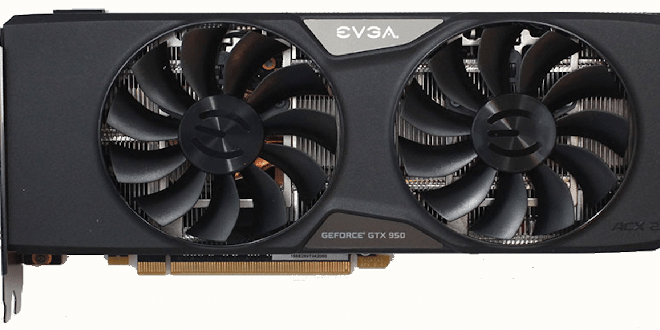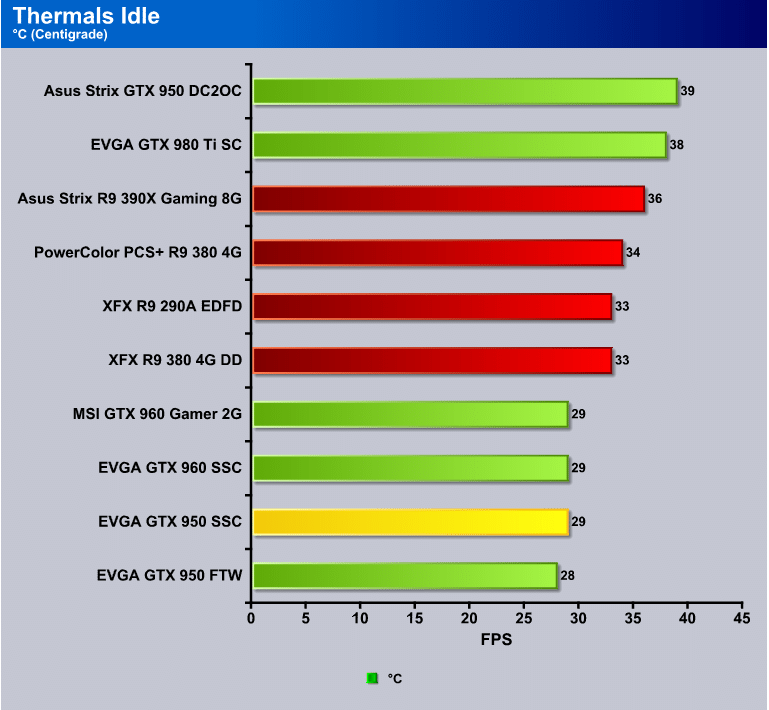Power Consumption
We take power readings at the wall socket using a KillAWatt voltage measurement device and this is total system power. It’s the same test system we have used on all the GPU’s on the charts so you get a good idea of the power draws from Each GPU. We load the machine and let it run for about 15 minutes so all the Windows background tasks have completed. We have Windows 10 fully updated and for the duration of testing we have the Windows Update Service disabled. Once Windows has finished its house cleaning tasks we check the temperature using GPU-Z, then fire up MSI’s Kombuster and run the GPU up to 100% core usage and let it run at that for 10 minutes then take the Load Power Consumption. Ten Minutes gives the video card time to heat up some and gives us a good solid power reading at load.
As far as power consumption goes the EVGA took 50 W at idle and 153 W at load.
Noise
We all hate noisy or whiny fans that intrude on our gaming / computing time. We run several noise level tests, Complete Idle, spiking load where the graphics load fluctuates between high and low load, and high load. We generally record sound levels sitting next to the tower with the tower at floor shelf level. We put the decibel meter close to where our ear would be and take measurements from there. To better get an idea of what the sound compares to here is a scale of typical sound levels.
Typical
Sound Levels
| Jet takeoff (200 feet) | 120 dBA | |
| Construction Site | 110 dBA | |
| Shout (5 feet) | 100 dBA | |
| Heavy truck (50 feet) | 90 dBA | |
| Urban street | 80 dBA | |
| Automobile interior | 70 dBA | |
| Normal conversation (3 feet) | 60 dBA | |
| Office, classroom | 50 dBA | |
| Living room | 40 dBA | |
| Bedroom at night | 30 dBA | |
| Broadcast studio | 20 dBA | |
| Rustling leaves | 10 dBA |
With the EVGA GTX 950 running at low power usage the fans wouldn’t spin up until it his 60°C so the idel noise from the GPU itself would be 0dBA but the test rig was running at 35dBA at idle and when we kicked the EVGA GTX 950 SSC it barely hit 42 dBA so we are entirely happy with the noise level the GTX 950 SSC emits.
Thermals
We use the same method to get thermal readings as we do for power consumption. Start the rig and let it idle for 15 minutes then take the Idle reading, once we have the idle reading we fire up Kombuster and run the GPU core at 100% for 10 minutes and check CPU-Z against GPU Tweak 2 then record the highest recorded temperature.
Thermally speaking we don’t use FurMark or any other program designed to produce maximum heat with no regard to damaging the GPU. We use and benchmark program designed to run the GPU at 100% on the core but we don’t use “Heat Prolific” programs designed to het every component of the Video Card. In this case and in most cases we use Kombusters Titan stress test to record thermals, We let the benchmark run a good 10 or 15 minutes then record the highest thermal reading. For idle we turn the machine on and wait about 10 minutes then record the Idle.
For the idle temperature we recorded an idle of 29°C one degree above the EVGA GTX 950 FTW but this is the Sonoran Desert so the rooms ambient temp might have been a little higher or it may be that the slightly faster core speed on the FTW model affects idle. We would lean-to ambient room temperature which can vary from spot to spot in a desert household.
Now we ramped the GPU up to 100% core usage and the EVGA GTX 950 SSC gave us a 72°C reading on default fan profile. The current trend in GPU’s is they don’t need a fan spinning until 60°C and that’s the setting used on EVGA’s 0dB operation. At 72°C that’s a perfectly acceptable max temperature for the EVGA GTX 950 SSC but we prefer a little more aggressive fan profile and let the fans kick on at 25% fan at 40°C and ramp up from there. That’s just a personal preference but without annoying noisy fans you can hit 60% fan and easily not notice them. Now at 75% fan you can tell there’s a fan running but we are using an open test bed from DIYPC so that makes a difference. Run your Video card how you prefer the default profile is fine but we lie a little more fan action for our gaming.
 Bjorn3D.com Bjorn3d.com – Satisfying Your Daily Tech Cravings Since 1996
Bjorn3D.com Bjorn3d.com – Satisfying Your Daily Tech Cravings Since 1996












